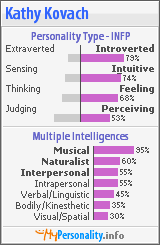 Now we're ready to rumble. Today I'll show you three sheets that I use to help me plot my novel.
Now we're ready to rumble. Today I'll show you three sheets that I use to help me plot my novel.
All those words on there are only instructions and a small note to you. Otherwise, it would just have the word "Snowflake" that I have linked to the real file.
To hyperlink:
- Right click on "SNOWFLAKE" above
- Choose "Hyperlink" in dropdown list
- Choose "Existing File or Web Page" in choices on left side
- Find saved Snowflake sheet for this title
SKELETON
This is also a very useful tool. I've pulled from several authors to create this visual. (Figure 2.) The point is that your story needs bones, some kind of structure to hold it's muscle, blood, and flesh upright. I plot out the skeleton before I begin writing the story. Sometimes, it changes as I learn about my characters, but it keeps me from writing in tangents. It keeps me focused.
I've included three screenshots for the Skeleton.
- Act I (Figure 2)
- Act II (Figure 3)
- Act III (Figure 4)
I write in acts because I'm a baby boomer who grew up on television and movies. I instinctively understand the three act structure, and I'll bet you do too. Following are the elements needed in each act to create a full skeleton.
Act I
- Identify the external need. Outward goal (i.e. Dorothy needs to save her dog but doesn't trust the people at home to do so, and she runs away.)
- Identify the internal need. Inner goal (i.e. Dorothy needs to be grateful for the home she has.)
- Inciting incident. Generally throws the character into Act II, often the point of no return, (i.e. Tornado -- although it could be a struggle within instead of a tangible thing. )

Figure 2
Act II
- Complications. These are the "ribs" of the skeleton. Think of the right side of the spine as the conflict and the left side of the spine as the result of the conflict. If this happens, then this must happen. Each conflict is another rib. (I.e. 1- Dorothy's house lands in place far from home / must find wizard. 2- Dorothy is captured by witch / must kill witch and get broom. 3- Dorothy brings broom to Wizard but is rejected / Toto reveals man behind curtain.)
- Bleakest moment. The worst thing that can happen. (I.e. Dorothy misses her ride.)
- Help from inside or outside. This could either be a person, a situation, or a revelation. (I.e. Glenda the good witch comes to her aid.)
- Lesson/Decision. Always reflects external need. (i.e. "There's no place like home.")

Figure 3
Act III
- Resolution, can be a small scene, but might not be a happy ending. (I.e. Dorothy is home and vows never to run away again.)
 Figure 4
Figure 4
GMC & Spiritual
This sheet (figure 5) gives me a quick reference to keep me on track. You can print this out and keep it near your computer.
It basically helps you flesh out the Goal, Motivation, and Conflict. The premise for this is an excellent book by Debra Dixon, GMC: Goal, Motivation and Conflict. I added the "spiritual" element since I write inspirational fiction.
Identify characters:
- Goal (What do they want?)
- Motivation (Why do they want it?)
- Conflict (What gets in their way?)
Do this for the external, the internal, and the spiritual aspects of your character.

Figure 5
That covers the plotting parts of the worksheet. Next week we'll look at simple charts to help keep things straight.







No comments:
Post a Comment